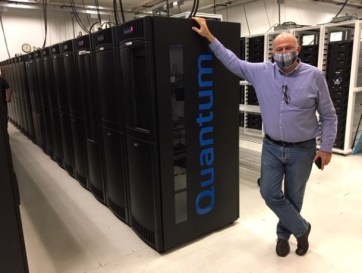This Week at the Q
ArchiveToday sees the last day of Quantum’s amazing ‘Summer Hours’ program, but I’m getting ‘This Week at the Q’ live before heading out to enjoy it! It’s been wonderful to enjoy every other Friday off over the summer, and spend some time with my kids on our camping adventures! So for this week’s Top 5 happenings…
1. We’ve been hearing from customers about the need to protect and retain data for decades, and in many cases the need for a ‘forever archive’ or ‘100-year archive’. Couple this with massive growth in unstructured data, and the need to be able to search and analyze this data, and building a modern data archiving strategy has become a key strategy for enterprises. This week, industry expert Fred Moore of Horison Information Strategies joined us on “The Anatomy of a 100-Year Archive for Unstructured Data” to discuss the scale of unstructured data growth, the applications fueling archive requirements, and the anatomy of the 100-year archive enterprises should consider. The replay is available here .
2. Like the webinar? We have a new white paper to go with it! Read “Anatomy of the 100-Year Archive” , by Fred Moore of Horison Information Strategies, to learn when data reaches archival status, data classification guidelines, the role of blocks, files and objects, and the various capabilities that enable an archive for the ages.

3. Another topic we’re hearing from customers more and more, is ransomware protection. For every ransomware attack we see in the news, there are hundreds of others that don’t get reported. Virus strains and cyber criminals have become increasingly insidious in their attempts to penetrate networks and take control of all digital assets, including backups. A virus cannot bypass a physical barrier formed between your data and the network nor a logical barrier based on data immutability. A solution doesn’t have to be expensive or complex to be effective. Register for our upcoming live webinar on October 22, “Protect Your Data with a Layered Ransomware Approach.”
4. Having a contingency plan in the event of unforeseen operational disruptions is good business. Whether it’s to deal with the current COVID-19 pandemic or in anticipation of a potential natural disaster, our customers build continuity plans with the technology needed to keep business operations afloat, as well as ensuring employees are trained in using remote working technologies. Quantum’s Diana Salazar covers the “Top Three Data Continuity Techniques Businesses Need to Adopt Now” in her recently published byline in Data Centre Dynamics.
5. We love hosting industry friends at our Executive Briefing Center! It was great to spend time with Philippe Nicolas, founder of Coldago Research and Storage Newsletter editor, in our Englewood, Colorado offices to tour our labs and talk roadmap. So good to start reconnecting in person again, even if we are masked up and touring 6 feet apart!


Leave a comment if there are topics you’d like to see added to our weekly top 5 happenings!
Natasha







